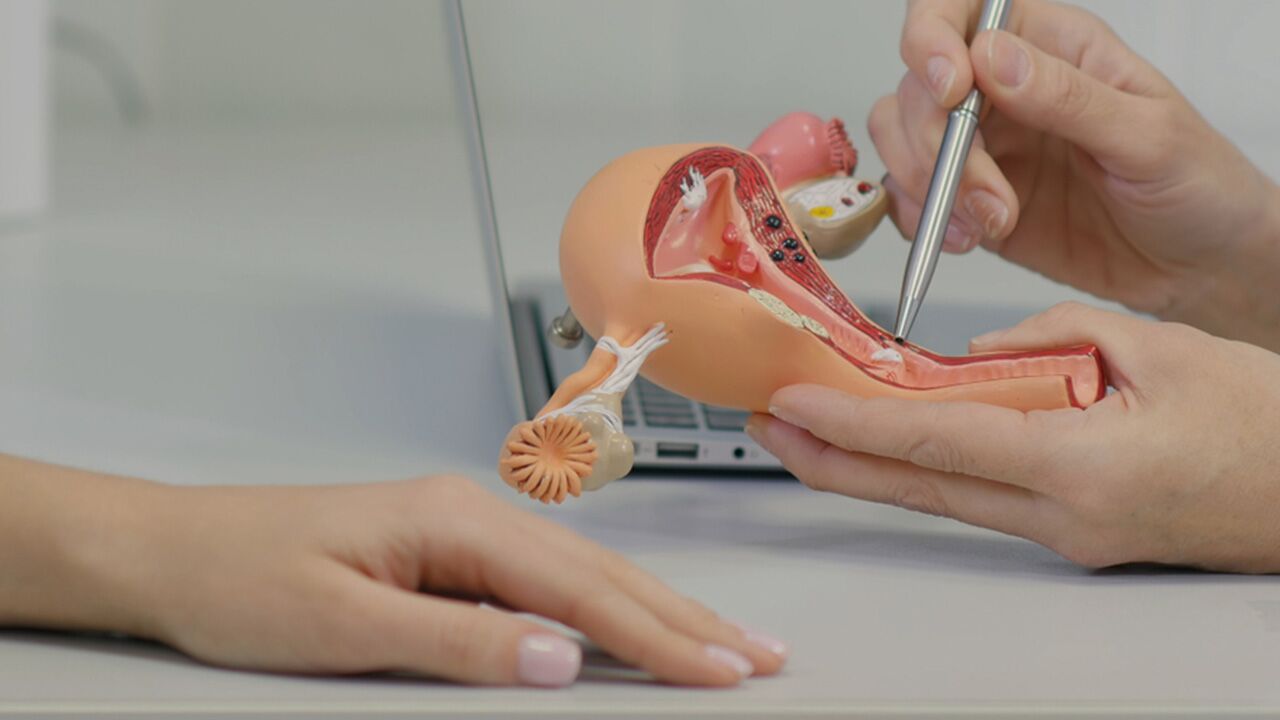Endometrial Cancer Symptoms and Treatments
 By: by Amino Science
By: by Amino Science

Some women have a monthly cycle that runs like clockwork, while other women get to play the guessing game. Either way, most are familiar with their bodies and cycles and experience the occasional deviation from the norm. Cycle length, symptoms, and menstrual flow can all vary from month to month. Factors such as emotional stress and medications can cause irregularities in your cycle, including spotting and missed periods. But if you notice any symptoms that are new or just don’t feel right, it’s best to listen to your body and pay a visit to your doctor. Your symptoms may be nothing, but if by chance they are something, it’s best to catch it as soon as possible.
There are various types of cancer of the female reproductive organs, including uterine cancer, ovarian cancer, and cervical cancer. The American Cancer Society estimates that over 61,000 women in the United States will be diagnosed with uterine cancer in 2019. Endometrial cancer is a form of uterine cancer and is the most common type of female reproductive cancer.
So what exactly is endometrial cancer? The endometrium is tissue that lines the uterus, sometimes called the womb, which goes through changes each month as part of a woman’s menstrual cycle. Every cycle, the endometrium thickens in anticipation of a fertilized egg attaching to the lining of the uterus and growing. If an egg doesn’t attach, the endometrium is shed from the uterus, causing menstruation. Sometimes, cancer cells can develop in the endometrium tissue, leading to endometrial cancer.
Endometrial Cancer Symptoms
Endometrial cancer can present with different symptoms depending on how much the cancer has progressed. Early symptoms of endometrial cancer, such as abnormal vaginal bleeding, can also be signs of other conditions, so it’s important to have any new symptoms checked out right away. Like other cancers, early detection of endometrial cancer is key to treating and beating it.
Symptoms of endometrial cancer include:
- Unusual vaginal bleeding including:
- Spotting
- Discharge
- Bleeding after menopause
- Bleeding between periods
- A change in your regular menstrual flow
- Watery or bloody vaginal discharge
- Pelvic pain
- Painful sexual intercourse
- Painful urination
- A growth, tumor, or mass
Endometrial cancer in the later stages can manifest as:
- Unexplained weight loss
- Feeling full fast
- Fatigue
- Bloating
- Abdominal pain
- A lump or mass in your pelvis
- Changes in your bowel habits and urination frequency

How High Is Your Risk of Endometrial Cancer?
While the following risk factors have been associated with endometrial cancer, they aren't an indication that you will ever develop the condition. Likewise, endometrial cancer can occur in the absence of any of the following cancer risk factors.
- Hormone influencers (including hormone therapy, such as estrogen without progesterone, obesity, some ovarian tumors, and polycystic ovarian syndrome)
- More menstrual cycles during the reproductive phase
- High-fat diet
- Sedentary lifestyle
- Diabetes
- Age
- Family history of endometrial or colorectal cancer
- Previous diagnosis of breast cancer or ovarian cancer
- Previous diagnosis of endometrial hyperplasia in the past
- Previous radiation therapy

Endometrial Cancer Diagnosis
If you have any new or unusual endometrial cancer symptoms, you should see your health care provider right away so that he or she can begin eliminating other conditions and getting you a diagnosis. If after a pelvic exam your symptoms are suspicious of endometrial cancer, your doctor will run a series of tests and exams to determine if cancer is, in fact, the culprit. The American Cancer Society lists the following tests commonly used to diagnose endometrial cancer.
Ultrasound
Your doctor may order one or more ultrasounds to get a good look at your reproductive organs. A pelvic ultrasound helps the doctor view your uterus, fallopian tubes, and ovaries. It is performed like most other ultrasounds. The wand is placed against your skin over your abdomen and uses sound waves to create internal images.
Another kind of ultrasound that may be ordered is a transvaginal ultrasound. With this kind of ultrasound, the wand is placed inside the vagina to get images of the reproductive system. Ultrasounds can help detect endometrial cancer by identifying common signs such as tumors, polyps, thickened endometrium, or cancer cells growing in the uterus.
Biopsy
An endometrial biopsy is a routine method of testing for endometrial cancer. To confirm or rule out endometrial cancer, your doctor may take a tissue sample from your uterus to have it tested.
Bloodwork
Physicians will usually order blood work to check the levels of various cells in the body. A complete blood count (CBC) is often ordered to check red blood cells, white blood cells, and platelets. A blood test called a CA-125 may also be ordered. Many ovarian and endometrial cancers release a substance called CA-125 into the bloodstream. A high amount of CA-125 on a blood test could indicate that the cancer has spread outside of the uterus.
Image Tests
If you are diagnosed with endometrial cancer, especially if it’s an advanced stage, your doctor may order additional imaging to check if the cancer has spread anywhere else in the body. Common imaging tests include:
- MRI
- CT scans
- Chest x-rays
- Cystoscopy to check the bladder
- Proctoscopy to check the rectum
- PET scan to check for small groups of cancer cells in the body
Amino Acids
Amino acids have long been known as the building blocks of the body. They help the body form protein and chemicals needed to stay healthy. You simply cannot have a healthy body without amino acids. But amino acids are now also being studied as possible identifying markers to diagnose endometrial cancer.
A study published in the International Journal of Clinical Oncology revealed that in a clinical study, the amino acid profiles of endometrial cancer patients were significantly different from the amino acid profiles of trial subjects without endometrial cancer. A patient’s amino acid profile can be gathered through a simple blood test. This study suggests that amino acid profiles may be useful in the future as biomarkers to detect endometrial cancer, eliminating the need for expensive and invasive diagnostic tests such as ultrasounds and biopsies.
Endometrial Cancer Treatments
While there are multiple ways of treating endometrial cancer, the treatment prescribed will vary from patient to patient. Many factors contribute to the type of treatment a patient receives, including the stage of the cancer, the age of the patient, and the overall health and wellness of the patient.
Surgery
Many women with endometrial cancer undergo a hysterectomy, which is the removal of the uterus, cervix, fallopian tubes, and ovaries. Once a woman has a hysterectomy, she will not be able to get pregnant. Young women or women desiring to have children should talk with their doctors about other treatment options in the hopes of preserving their fertility.
To help accelerate recovery after a hysterectomy, supplement with Amino Co's Surgical Recovery blend, proven to increase physical strength and function as measured at 6 weeks post surgery.
Radiation
Radiation therapy is a common treatment used to destroy cancer cells. If tumors are present as a result of endometrial cancer, doctors will sometimes recommend radiation before surgery in an attempt to shrink the tumor. Radiation is also sometimes recommended post-surgery to ensure all cancer cells have been eradicated and to reduce the risk of the cancer coming back.
Chemotherapy
Chemotherapy is another standard treatment used to destroy cancer cells. Chemotherapy is often recommended for women with advanced endometrial cancer, once the cancer has spread beyond the uterus.
So remember, occasional deviations from your regular menstrual cycle can be normal, especially if you’ve found yourself stressed out lately. But any new symptoms that persist or seem concerning should be checked out right away. If you have any of the risk factors listed for endometrial cancer, such as family history, it’s a good idea to talk to your doctor about your higher risk and become informed about signs and symptoms to catch the cancer at its early stages.

Up to 25% off Amino
Shop NowTAGS: conditions
Join the Community
Comments (0)
Most Craveable Recipes




 833-264-6620
833-264-6620



















